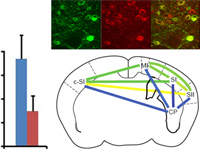A long-standing hypothesis termed “Hebbian plasticity” suggests that memories are formed
through strengthening of synaptic connections between neurons with correlated activity. In
contrast, other theories propose that coactivation of Hebbian and neuromodulatory processes
produce the synaptic strengthening that underlies memory formation. Using optogenetics we
directly tested whether Hebbian plasticity alone is both necessary and sufficient to produce
physiological changes mediating actual memory formation in behaving animals. Our previous
work with this method suggested that Hebbian mechanisms are sufficient to produce aversive
associative learning under artificial conditions involving strong, iterative training. Here
we systematically tested whether Hebbian mechanisms are necessary and sufficient to produce
associative learning under more moderate training conditions that are similar to those that
occur in daily life. We measured neural plasticity in the lateral amygdala, a brain region
important for associative memory storage about danger. Our findings provide evidence that
Hebbian mechanisms are necessary to produce neural plasticity in the lateral amygdala and
behavioral memory formation. However, under these conditions Hebbian mechanisms alone were
not sufficient to produce these physiological and behavioral effects unless neuromodulatory
systems were coactivated. These results provide insight into how aversive experiences trigger
memories and suggest that combined Hebbian and neuromodulatory processes interact to engage
associative aversive learning.
